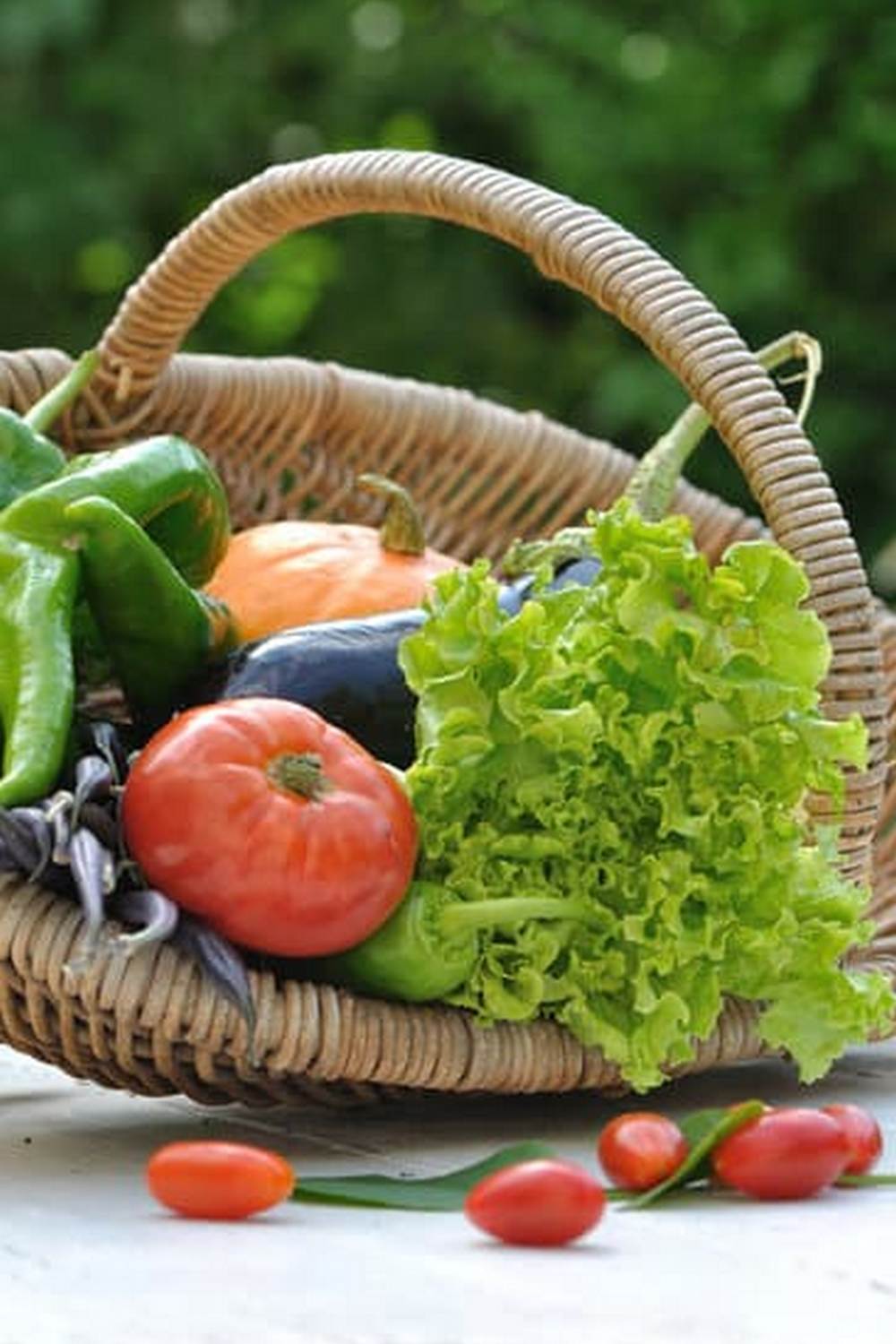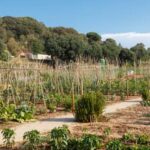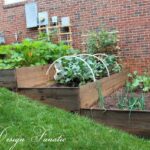European backyard vegetable gardens hold a unique charm that combines tradition, practicality, and aesthetics. In this article, we will delve into the rich history, popular vegetables, design inspirations, climate considerations, tips for success, seasonal planting guides, sustainability practices, and community impact of these gardens across Europe. From the rolling hills of Tuscany to the quaint English countryside, European backyard vegetable gardens offer a glimpse into sustainable living and community spirit.
Throughout history, Europeans have embraced the tradition of backyard gardening as a way to supplement their diets with fresh produce and connect with nature. The practice has evolved over generations to become an integral part of European culture and identity. Today, these gardens not only provide food but also serve as a source of pride for many homeowners who showcase their gardening skills through beautifully designed plots.
From vibrant tomatoes in Italy to hearty root vegetables in Germany, European backyard vegetable gardens boast a diverse array of popular crops that thrive in different climates and soil conditions. By exploring the unique vegetables grown in these gardens, one can gain insight into the culinary traditions and preferences of each region. Whether it’s French radishes or Spanish peppers, each vegetable tells a story of local cuisine and heritage.
Historical Background
European backyard vegetable gardens have a rich historical background that dates back centuries. Throughout the history of Europe, growing food in one’s backyard has been a common practice among households. From small village plots to grand estate gardens, the tradition of backyard gardening in Europe has deep roots. This tradition is not only about providing fresh produce for the family but also about connecting with nature and maintaining self-sufficiency.
Traditional Methods and Techniques
In Europe, traditional methods and techniques for backyard vegetable gardening have been passed down through generations. Many European countries have their own unique approaches to gardening, shaped by their specific climate, soil conditions, and cultural practices. For example, the French potager garden emphasizes aesthetics as well as functionality, while Italian ortos focus on maximizing space efficiency.
Cultural Significance
The tradition of backyard vegetable gardening in Europe is not just a practical way to grow food; it also holds cultural significance. In many European countries, growing your own vegetables is seen as a way to connect with the land and honor agricultural traditions. Additionally, sharing surplus produce with neighbors or participating in community gardening initiatives has long been a way for Europeans to build social connections and strengthen community ties.
Popular Vegetables
European backyard vegetable gardens are often populated with a variety of popular vegetables that thrive in the region’s climate and soil conditions. These gardens offer a diverse range of produce that not only add visual appeal to the garden but also provide an opportunity for homeowners to enjoy fresh, homegrown produce throughout the year. From traditional staples to trendy favorites, European backyard vegetable gardens showcase an assortment of vegetables that cater to different tastes and culinary preferences.
Tomatoes
One of the most commonly grown vegetables in European backyard gardens is the beloved tomato. With its versatility in cooking and vibrant colors, tomatoes are a staple ingredient in many European dishes. From juicy beefsteak tomatoes to sweet cherry tomatoes, there are numerous varieties that thrive in European climates. Tomatoes can be grown in containers or directly in the ground, making them ideal for both small and large backyard gardens.
Zucchini
Zucchini, also known as courgette, is another popular vegetable found in European backyard gardens. This versatile vegetable is easy to grow and produces abundant harvests throughout the summer months. Whether grilled, sautéed, or baked into bread, zucchini offers a mild flavor that complements a wide range of dishes. Its compact size makes it suitable for smaller garden spaces, making it a favorite among gardeners looking to maximize their yield.
Lettuce and Leafy Greens
Lettuce and leafy greens such as spinach, arugula, and Swiss chard are essential components of European backyard vegetable gardens. These greens are not only easy to grow but also provide a continuous harvest when planted successively throughout the season. With their crisp textures and vibrant colors, lettuce and leafy greens add freshness to salads, sandwiches, and other dishes. Homeowners can experiment with different varieties to create colorful mixed salads straight from their garden beds.
Design Inspiration
European backyard vegetable gardens have a rich history of diverse and innovative designs that combine functionality with aesthetic appeal. One common style seen in many European gardens is the use of raised beds, which not only help with soil drainage but also make it easier to manage and maintain different crops. Additionally, some gardeners opt for the traditional row planting method, while others prefer the more modern approach of square foot gardening, maximizing space efficiency.
In terms of layouts, European backyard vegetable gardens often feature a mix of vegetables, herbs, and flowers strategically arranged to create a harmonious and visually pleasing environment. Companion planting is a popular practice where complementary plants are grown together to maximize growth and deter pests naturally. Vertical gardening is also gaining popularity in Europe, especially in urban areas where space is limited, allowing for more crops to be grown in a compact area.
Furthermore, many European gardeners take inspiration from formal French or Italian garden designs when planning their backyard vegetable gardens. These styles emphasize symmetry, structure, and ornamental elements that add elegance to the overall layout. Whether following a classical design or opting for a more contemporary approach, European backyard vegetable gardens showcase creativity and dedication towards sustainable living practices.
| European Garden Style | Main Features |
|---|---|
| Raised Beds | Functionality and easy maintenance |
| Companion Planting | Natural pest control and enhanced growth |
| Vertical Gardening | Space optimization in urban settings |
Climate Considerations
The European climate plays a significant role in shaping the practices and outcomes of backyard vegetable gardens across the continent. From the Mediterranean region to Northern Europe, the varying climates present both challenges and opportunities for gardeners.
In Southern Europe, where the climate is generally warmer and drier, popular vegetables like tomatoes, peppers, and eggplants thrive in the abundant sunlight. On the other hand, in regions with cooler climates like Northern Europe, root vegetables such as carrots, potatoes, and beets are more commonly grown due to their tolerance for lower temperatures.
One key aspect of understanding how European climate impacts gardening practices is the consideration of frost dates. Frost can damage or kill delicate plants, so knowing the average last spring frost date and first fall frost date in your region is crucial for successful gardening.
Gardeners in countries like France and Germany must plan their planting schedules accordingly to avoid potential damage from late frosts. This seasonal awareness also extends to selecting appropriate plant varieties that are well-suited to the specific climate conditions of each region.
Furthermore, European backyard vegetable gardeners frequently utilize season extension techniques such as cold frames, row covers, and hoop houses to protect their crops from harsh weather conditions. These structures help prolong the growing season and provide a buffer against unexpected temperature fluctuations. By adapting to their local climate through strategic planning and resourceful solutions, gardeners in Europe are able to optimize their harvests and create thriving vegetable gardens in their own backyards.
| Climate Considerations Overview | European Backyard Vegetable Gardens |
|---|---|
| Southern Europe Climate | Warmer & drier; tomatoes, peppers thrive |
| Northern Europe Climate | Cooler; root vegetables like carrots predominant |
| Frost Dates Importance | Planning planting schedules around last spring frost & first fall frost dates |
| Season Extension Techniques | Cold frames, row covers used for prolonging growing season |
Tips for Success
Starting and maintaining a successful backyard vegetable garden in Europe can be a rewarding and fulfilling experience. Whether you are new to gardening or have some experience, following some practical advice can help you make the most out of your efforts. Here are some tips to consider:
- Location is key: Choose a spot in your yard that receives ample sunlight for at least 6-8 hours a day. Make sure it is also easily accessible for watering and maintenance.
- Soil preparation: Test the soil in your garden to determine its pH level and nutrient content. Amend the soil with organic matter like compost or manure to improve its quality before planting.
- Choose the right vegetables: Select vegetables that are well-suited to the European climate and your region’s specific conditions. Some popular choices for European backyard vegetable gardens include tomatoes, lettuce, carrots, zucchini, and herbs like basil and parsley.
Another important factor to consider for a successful European backyard vegetable garden is proper watering techniques. Depending on the season and weather conditions, plants may need more or less water. It’s essential to establish a consistent watering schedule, preferably in the morning or evening to prevent evaporation. Additionally:
- Regular maintenance: Check your plants regularly for signs of pests or diseases. Remove weeds promptly to prevent competition for nutrients.
- Succession planting: Plan ahead and stagger your plantings throughout the growing season to ensure a continuous harvest.
- Harvesting tips: Harvest vegetables at their peak ripeness to enjoy their best flavor and nutritional value. Be sure to use proper harvesting techniques to avoid damaging plants.
By following these practical tips, beginners can set themselves up for success when starting their own European backyard vegetable garden. With patience, dedication, and proper care, you can enjoy a bountiful harvest of fresh produce right from your own backyard while embracing the traditional charm of European gardening practices.
Seasonal Planting Guide
Planting a vegetable garden in your European backyard can be a rewarding and sustainable way to enjoy fresh produce throughout the year. Understanding what to plant during each season is essential for successful gardening. Here is a detailed breakdown of what vegetables you can consider planting in your European backyard garden:
- Spring:
- Summer:
- Fall:
- Winter:
Some popular vegetables to plant in the spring include lettuce, radishes, peas, and spinach. These cool-season crops thrive in the mild temperatures of spring and can be harvested relatively quickly for an early garden bounty.
As temperatures rise during the summer months, you can plant heat-loving vegetables such as tomatoes, peppers, cucumbers, zucchini, and beans. These vegetables require plenty of sunlight and warm soil to grow and produce a plentiful harvest.
In the fall, you can continue to grow cool-season crops such as arugula, kale, carrots, and beets. These vegetables can withstand cooler temperatures and even improve their flavor after experiencing light frosts.
While winter may pose challenges for vegetable gardening in some parts of Europe, you can still grow hardy vegetables like Brussels sprouts, cabbage, winter squash, and leeks. Providing protection from harsh weather conditions will help these vegetables thrive during the colder months.
By following this seasonal planting guide tailored to European climates, you can maximize your backyard vegetable garden’s productivity throughout the year. Adjusting your planting schedule according to each season will ensure that you have a continuous supply of fresh produce while making the most out of your gardening efforts in your European backyard.
Sustainability Practices
European backyard vegetable gardens not only provide fresh produce but also serve as a platform for implementing sustainable practices. One of the most common eco-friendly techniques used in European backyard gardening is composting. By recycling kitchen scraps and yard waste into compost, gardeners can enrich their soil with essential nutrients without the need for chemical fertilizers. This practice not only reduces waste but also promotes healthy plant growth.
Furthermore, many European backyard gardeners prioritize water conservation by utilizing rainwater harvesting systems. Collecting rainwater in barrels or cisterns allows them to water their plants without relying on treated municipal water, thus reducing their environmental impact. Additionally, incorporating native plants and companion planting techniques helps maintain a balanced ecosystem in the garden, reducing the need for pesticides and promoting biodiversity.
In addition to these individual practices, European backyard vegetable gardens often participate in community initiatives focused on sustainability. Community garden plots, shared tool libraries, and knowledge-sharing events contribute to a sense of collective responsibility towards the environment.
These collaborative efforts not only enhance the sustainability of individual gardens but also foster a sense of belonging and connection within the community. Overall, sustainable practices are at the core of European backyard vegetable gardening, reflecting a conscious effort to minimize environmental impact while maximizing productivity.
Community Impact
European backyard vegetable gardens not only provide a space for individuals to cultivate their own fresh produce but also have a significant impact on the communities where they are located. These initiatives have been instrumental in bringing people together, fostering a sense of camaraderie, and promoting sustainability practices. Through shared knowledge, resources, and experiences, neighbors in European communities have found ways to connect over their mutual love for gardening.
One of the key aspects of European backyard vegetable gardens is the emphasis on community involvement. Whether it’s through organized events like neighborhood planting days or informal gatherings to exchange seeds and tips, these gardens serve as focal points for social interaction. Residents come together to collaborate on various aspects of gardening, from planning and design to maintenance and harvesting. This shared effort not only strengthens relationships but also creates a sense of unity among diverse individuals.
Furthermore, European backyard vegetable gardens play a vital role in promoting environmental awareness and sustainable living practices within communities. By utilizing eco-friendly techniques such as composting, rainwater harvesting, and natural pest control methods, gardeners are not only producing healthy organic food but also reducing their carbon footprint.
This commitment to sustainability resonates with neighbors who share similar values, leading to discussions on how each individual can contribute to a more environmentally conscious lifestyle. In essence, these gardens are more than just plots of land filled with vegetables; they are hubs of community engagement, education, and positive change.
Frequently Asked Questions
What Is the French Style of Vegetable Gardening?
The French style of vegetable gardening is characterized by geometric layouts, often in the form of raised beds or potagers. This method focuses on aesthetics as well as functionality, incorporating flowers and herbs alongside vegetables.
What Is the European Garden?
The European garden is known for its formal design, symmetrical shapes, and meticulously manicured hedges and lawns. These gardens often feature ornate sculptures, fountains, and intricate pathways that create a sense of grandeur and elegance.
How Do You Make a French Country Garden?
To create a French country garden, it’s important to embrace a relaxed and rustic aesthetic. Incorporate a mix of blooming flowers like lavender and roses, along with fragrant herbs like thyme and sage.
Add natural elements like stone paths, wooden trellises, and weathered terracotta pots to enhance the charm of the garden. Focus on creating a sense of spontaneity and informality within the overall design to capture the essence of a traditional French country garden.

If you’re looking to get into vegetable gardening, or are just looking for some tips on how to make your current garden better, then you’ve come to the right place! My name is Ethel and I have been gardening for years. In this blog, I’m going to share with you some of my best tips on how to create a successful vegetable garden.





